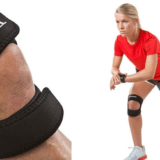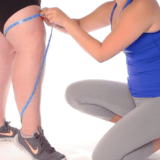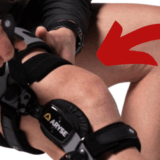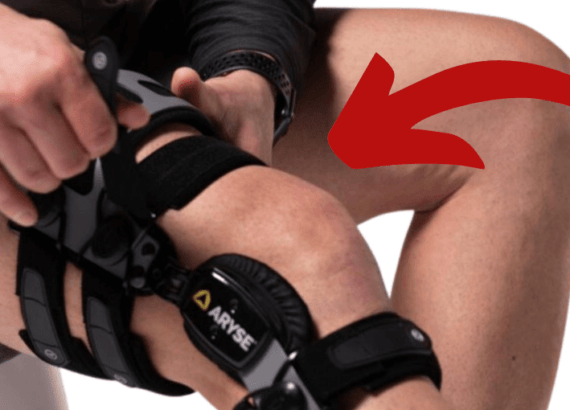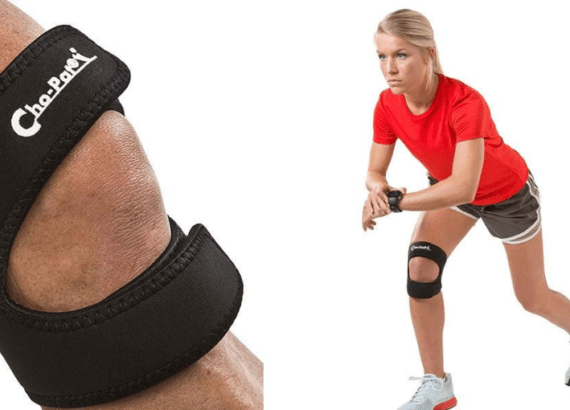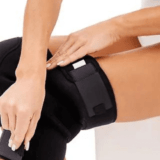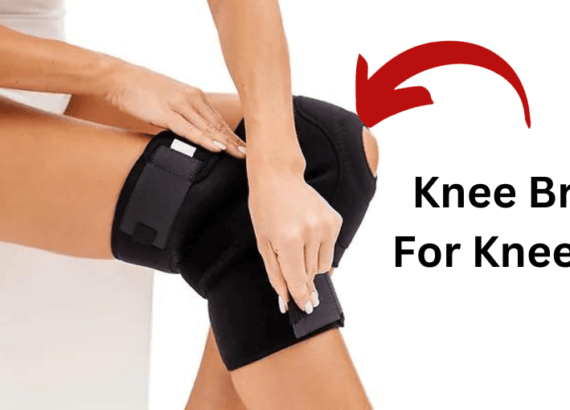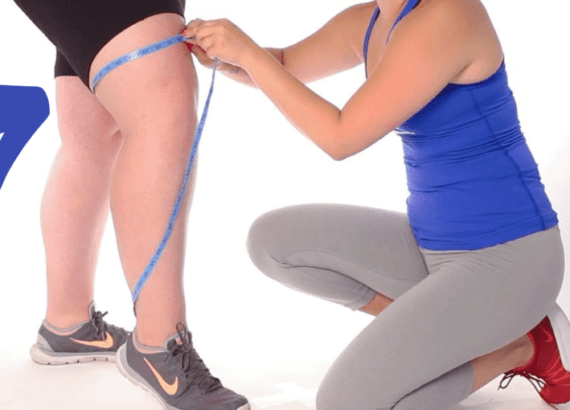Ensuring Proper Fit: A Guide How to Measure for a Knee Brace
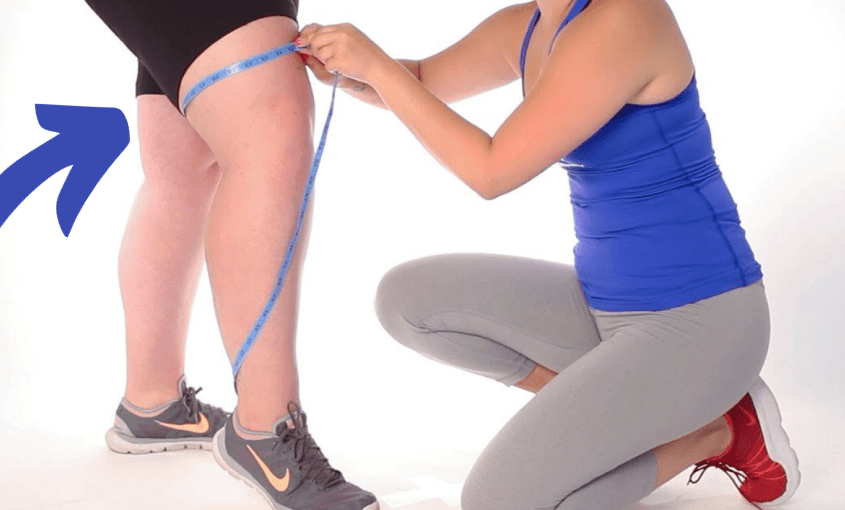
A knee brace can be a lifesaver, offering the support and stability your knees need during recovery or physical activity.
But here’s the thing: it’s not a one-size-fits-all solution. To truly harness the benefits of a knee brace, you need the perfect fit.
Whether you’re recovering from a knee injury, experiencing chronic pain, or simply looking for additional support during physical activities, a knee brace can be an invaluable tool in improving stability, reducing pain, and enhancing overall mobility.
However, selecting the right knee brace starts with accurate measurements to ensure a proper fit that provides optimal support and comfort.
In this comprehensive guide, we’ll take you through the ins and outs of How to Measure for a Knee Brace.
By following these instructions, you will gain the knowledge necessary to determine the appropriate size and style of knee brace that best suits your needs.
So, let’s dive in and explore the essential techniques for measuring your knee accurately.
Choosing the Right Knee Brace
Measuring for a knee brace is an important step to ensure proper fit and support. In this guide, we will walk you through the steps involved in measuring for a knee brace. Let’s get started!
Step 1: Gather the Necessary Tools
To measure for a knee brace, you will need a measuring tape or a flexible ruler. Make sure the measuring tool is long enough to measure around your knee comfortably.
Step 2: Determine the Knee Circumference
First, sit down with your leg bent at a 90-degree angle. This position helps take accurate measurements.
Place the measuring tape or ruler around the widest part of your knee, typically the middle of the kneecap. Make sure the tape is snug but not too tight.
Step 3: Measure the Thigh and Calf Dimensions (optional)
If you’re looking for a knee brace that extends above or below the knee, you may need to measure the thigh and calf dimensions.
To measure the thigh, wrap the measuring tape around the widest part of your thigh, a few inches above the knee.
For the calf measurement, wrap the tape around the widest part of your calf muscle, a few inches below the knee.
Step 4: Take Note of the Measurements
After obtaining the knee circumference measurement (and optional thigh and calf measurements), write down the measurements in inches or centimeters. This will help you find the appropriate size when choosing a knee brace.
Step 5: Choose the Correct Knee Brace Size
Different knee brace manufacturers have their own sizing charts, so it’s essential to refer to the specific brand’s guidelines.
Match your measurements with the appropriate size on the manufacturer’s chart. Some knee braces are adjustable and accommodate a range of sizes.
Step 6: Try on the Knee Brace
Once you have determined the correct size, try on the knee brace. Make sure it fits comfortably and provides the right amount of support.
It should neither be too tight, restricting blood circulation, nor too loose, compromising stability.
Importance of Measuring for a Knee Brace
Measuring a knee brace is essential for several reasons, as it ensures the proper fit and effectiveness of the brace. Here are the key reasons why measuring for a knee brace is important:
- Proper fit: A knee brace needs to fit snugly around your knee to provide effective support. If the brace is too tight, it may restrict your movement and impede blood circulation. On the other hand, if it’s too loose, it may not offer adequate support and stability. Measuring ensures that you find the right size to ensure a proper fit.
- Effective support: A well-fitted knee brace can provide the appropriate level of support to help with various knee conditions and injuries. Whether you’re recovering from a knee surgery, managing a chronic condition like arthritis, or preventing sports-related injuries, a properly fitting knee brace can offer the necessary support to stabilize the knee joint and promote healing.
- Comfort: Wearing a knee brace that is too tight or too loose can be uncomfortable, causing skin irritation or pain. By measuring for a knee brace and finding the right size, you can ensure a comfortable fit that allows for proper movement and reduces discomfort during everyday activities or during exercise or sports.
- Injury prevention: If you’re using a knee brace for injury prevention or during physical activities, it’s important to have the correct fit. A properly fitting knee brace can help reduce the risk of further damage by stabilizing the knee joint and providing support to the ligaments and muscles around the knee.
- Long-term use: If you require a knee brace for long-term use, such as for chronic knee conditions, it’s crucial to have an accurate measurement. A knee brace that fits properly will be more comfortable to wear for extended periods, allowing for greater compliance and better management of your condition.
Tips for How to Measure for a Knee Brace Correctly
When measuring for a knee brace, it’s important to follow some guidelines to ensure accurate measurements. Here are some tips to help you measure for a knee brace correctly:
Use a flexible measuring tape
A measuring tape is the most accurate tool for measuring the circumference of your knee. Make sure it’s flexible and long enough to wrap around your knee comfortably.
Measure in a Seated Position
Sit down with your leg bent at a 90-degree angle. This position helps relax your leg muscles and provides a more accurate measurement.
Measure around the Middle of the Kneecap
Place the measuring tape around the widest part of your knee, typically the middle of the kneecap.
Make sure the tape is snug against your skin but not too tight. It is important to measure the circumference of your knee accurately to find the right size.
Take Multiple Measurements
To ensure accuracy, take more than one measurement of your knee circumference. Measure your knee a few times and use the average of the measurements to ensure the most accurate result.
Measure the Thigh and Calf Dimensions if necessary
If you’re looking for a knee brace that extends above or below the knee, you may need to measure the thigh and calf dimensions.
Follow the manufacturer’s instructions to measure the widest part of your thigh (a few inches above the knee) and calf (a few inches below the knee).
Write Down Your Measurements
After obtaining your knee circumference measurement (and any additional measurements), write them down accurately. This will help you refer back to them when choosing the right size knee brace.
Adjustments and Troubleshooting
After measuring for and trying on a knee brace, you may need to make some adjustments or troubleshoot any issues that arise. Here are some tips for adjusting and troubleshooting a knee brace:
- Tighten or loosen straps: Most knee braces have adjustable straps or closures that allow you to customize the fit. If the knee brace feels too loose or too tight, try adjusting the straps or closures to achieve a more comfortable and secure fit. Follow the manufacturer’s instructions for making adjustments.
- Ensure proper alignment: The knee brace should be properly aligned with your knee joint. If it feels off-center or misaligned, adjust the brace until it aligns with your kneecap and the sides of your knee. This will help provide optimal support and stability.
- Check for any rubbing or discomfort: Wear the knee brace for a few minutes and pay attention to any rubbing, chafing, or discomfort. If you experience any discomfort, try adjusting the position or tightness of the brace. You may also consider wearing a thin layer of clothing underneath the brace to reduce friction.
- Evaluate range of motion: Move your knee through its full range of motion while wearing the brace. Check if the brace allows for comfortable movement without restriction. If you find any limitation or discomfort during specific movements, make adjustments to improve your range of motion.
- Seek professional help if needed: If you’re having difficulty adjusting the knee brace or experiencing persistent discomfort, it’s advisable to seek help from a healthcare professional, such as a physical therapist or orthopedic specialist. They can provide guidance, make necessary adjustments, or recommend an alternative knee brace if needed.
FAQ
Here are some frequently asked questions (FAQ) related to measuring and fitting knee braces:
Q1: How tight should a knee brace be?
A knee brace should be snug but not overly tight. It should provide support and stability without restricting proper blood circulation or causing discomfort.
If the brace feels too tight or is causing pain, try adjusting the straps or consider choosing a different size or style of knee brace.
Q2: Can I wear a knee brace over clothing?
Yes, you can generally wear a knee brace over your clothing. However, make sure the clothing is not too thick or bulky, as it may affect the fit and effectiveness of the brace.
It’s also important to ensure that the brace has direct contact with your skin in order to provide optimal support.
Q3: Can I wear a knee brace during physical activities?
Yes, knee braces are designed to provide support and stability during physical activities.
However, it’s important to choose a knee brace that is specifically designed for the type of activity you’ll be engaging in.
Some knee braces offer more flexibility and movement while others provide stronger support for high-impact activities.
Consult your healthcare professional or refer to the manufacturer’s guidelines for details on using a knee brace during specific activities.
Q4: How do I clean and maintain a knee brace?
Follow the specific care instructions provided by the manufacturer, as different knee braces may have different cleaning guidelines.
In general, you can hand wash the brace using mild soap and lukewarm water. Avoid using harsh chemicals or bleach.
Allow the brace to air dry fully before using it again. Regularly inspect the brace for any signs of wear or damage and replace it if necessary.
Q5: Can a knee brace be worn on either leg?
Most knee braces are designed to be interchangeable and can be worn on either leg. However, there are certain knee braces that are specifically designed for either the left or right knee.
Check the product specifications or packaging to ensure you choose the correct knee brace for your intended leg.

As a dedicated medical professional with years of experience, Dr. Roksana Parveen understands the importance of taking a comprehensive approach to health and wellness. She believes in the power of education to provide evidence-based information to help individuals about their health.
More From Me
Connect with me and get latest updates. - Dr. Roksana Parveen

